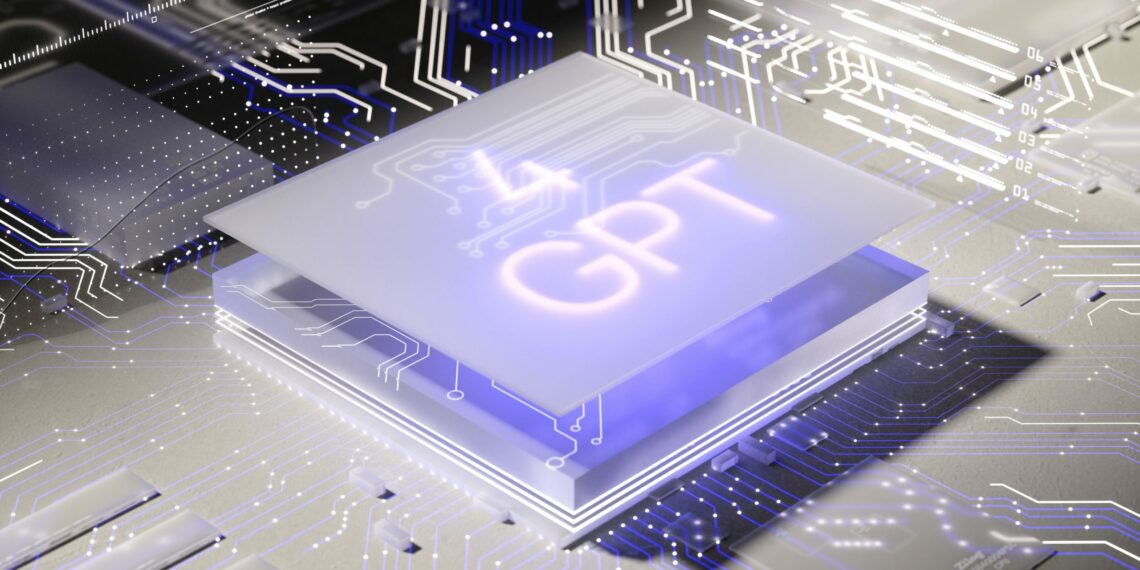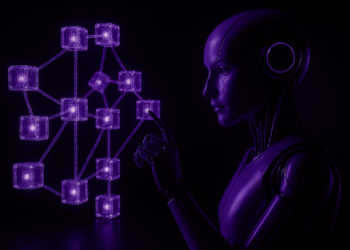Future may be closer than you think. You might have heard of ChatGPT, this highly advanced AI chatbot which received a lot of media coverage those past months. Already said to be able to shake up the professional world, the AI also received strong reactions, from positive to negative ones. ChatGPT promises to help collaborators with repetitive tasks and to release their creativity, but how? Here comes Wemanity’s analysis, guiding you towards this new era…
1. All Eyes on ChatGPT
You likely heard about it through the media coverage or on social networks: ChatGPT. Why does everyone talk about it? The best answer we could give would be coming from the AI itself:
« As an AI language model developed by OpenAI, I have gained some popularity and attention due to my ability to generate human-like text and engage in conversations with users like you. People talk about me because I can provide information, answer questions, offer suggestions, and engage in discussions on a wide range of topics. […] Additionally, the rapid advancements in artificial intelligence and natural language processing have made AI language models like me more accessible and widely known. »
ChatGPT
How can we understand this impressive innovation? And what will it change in our relation to work and to professional collaboration? Our data and training experts address the issue, which could already come out as a huge creativity and innovation boost for enterprises and their collaborators…
What is ChatGPT?
ChatGPT is an AI (artificial intelligence) language model based on the Generative Pretrained Transformer (GPT) architecture. In simpler words, ChatGPT is a software designed to understand and generate text while using advanced automatic learning algorithms.This chatbot is available for free in its beta version and can already chat in 100 different languages, as well as produce content based on instructions from the user: Articles, summaries, trainings, reports, personalized tests, philosophy essays, or even coding…
Where does ChatGPT come from?
Produced within the Silicon Valley and created in June 2020 by Open AI (an enterprise founded by Sam Altman and Elon Musk in 2015), ChatGPT was already gathering 12 million active users a day in January 2023.
Microsoft boosted its deployment by investing billions of dollars to be allowed to add it to their browser Bing and compete with IT giants Google. While quite recent, the tool has quickly become viral as it shakes up the professional world, even resulting in a regulation project by the European Union, called AI Act.
2. Friend, not Foe
Why are enterprises scared of ChatGPT?
ChatGPT’s launch generated a lot of strong reactions, describing it as a surprise or even a marvel with its ability to write relevant texts including elements of natural language. But this AI also created a few fears as well. Creatives and copywriters are anxious when they witness its ability to master the language we use every day.
Talking robots are not new, but such an advanced level never happened before. We’re far from the usual machine-like chatbot language, and in the academic world, there’s already a debate coming on the idea it could come as a substitute to learning.
Is ChatGPT a danger for learning?
Unlike Terminator, ChatGPT’s goal doesn’t include replacing humans. Its artificial intelligence extrapolates and summarizes loads of data to offer elements of answer and analysis for its users. There is no answer without question, and there is no valuable answer without rereading. The AI therefore collects and delivers information, but doesn’t forget to have a critical analysis and a relevant use of the information it brings. Whether it’s an academic work or a professional report, a copy-paste will never replace a gift for writing or a critical mind.
‘’The sentences they produce look right—they use the right kinds of words in the correct order. But the AI doesn’t know what any of it means. These models work by predicting the most likely next word in a sentence. They haven’t a clue whether something is correct or false, and they confidently present information as true even when it is not.’’
Melissa Heikkilä, journaliste de la revue MIT Technology
In summary, ChatGPT isn’t there to look human and perform as such, but to help humans do their job… in a better way!
3. AI: The New Ally for Enterprises?
The ally to perform low added-value tasks
By enabling the automation of some repetitive and time-consuming tasks, like collecting and summarizing information, ChatGPT comes as some precious help to optimize time in some industries. ‘’ChatGPT’s AI offers an opportunity to gain an advanced analysis based on the information given by a collaborator. It can therefore potentially give access to all human knowledge related to this information’’, explains Benjamin Simonneau, Head of Data Management at Wewyse, Wemanity’s label dedicated to Data.
It turns out as a huge efficiency boost as this meticulous work exists in every organisation. It represents a huge amount of time spent on tasks that are thankless, but of high importance.
Why could ChatGPT become a lever for growth?
By unloading collaborators from low added-value tasks, ChatGPT will play a crucial role in the professional world.
The AI will first help by enhancing productivity and even quality, while allowing us to reconsider priorities. The human being is a creative and deeply complex being. With the coming of AI, interaction and empathy (read everything relative to soft skills) will gain more importance within organisations.
‘’In an ever-changing world, soft skills are becoming prime assets for applicants and collaborators. Human Resources are caring a lot about the evaluation of soft skills during a job interview or the development of those within the collaborators’ development plans. ChatGPT could be a catalyst of this trend, but won’t allow for a magical and instant development of those skills’’, explains Ninon Stref, Co-Leader at Wemanity Learning Center.
How can ChatGPT help data-driven enterprises?
ChatGPT can help data-driven enterprises with an easier and faster data collection and delivery, while also supporting the enterprise in the organisation, research, understanding, and interpretation of data.
We can therefore imagine a concrete use for an engineer, who could give the tool a description of available data and ask a question about the problem. The AI would be able to give advice on the way to use the data, and potentially coding examples for their needs.
Explaining a problem to an artificial intelligence will allow for a better look at potential solutions, exploring different reflexion perspectives, generating new data to be used in models, and highlighting concrete and original ideas.
How will the AI allow for personalized training and efficiency gains?
The AI never stops learning. This AI chatbot is based on a GPT natural language model, which allows it to produce consistent and relevant answers on a large array of topics. This ability to summarize loads of information and to sharpen its understanding with its exchanges will play a key role in the improvement of professional training.
This tool can indeed give an on-demand personalized training to a user, based on their needs and rhythm, with personalization for both its form and content.
We could also imagine writing the script for an e-learning video on a topic which would be so specific to a work environment that there would be no preexisting reference. It would also be able to test multiple perspectives to make sure no question is left without answer. With the ability to work on very specific topics, the use of AI in professional training could decrease the investment for a larger and on-demand deployment of learning contents.
With the use of ChatGPT 4, available since March 14th, 2023, you’ll also be able to:
- Generate texts with more creativity
- Summarize texts up to 25,000 words
- Transform ideas into website or applications
- Handle complex legal issues
- Interpret the context of a picture
It’s no longer a dream. In a near future, AI will be able to digest disproportionate amounts of professional data like the number of collaborators, their functions, their key skills and potential evolutions. We can even imagine it will be able to anticipate our needs and create a personalized learning journey adapted to anyone and their experience within the organisation.
4. AI Needs You
A better learning experience, dynamic learning journeys with evolutions, a high personalization, … are the many gains from ChatGPT for what is already called adaptive learning.
However, AI wouldn’t stand on its own because of the lack of soft skills and because a training should ideally be co-created with an expert, like you could find at the Wemanity Learning Center.
Artificial intelligence’s goal remains gaining time and being an assistant which can’t answer exactly to every situation.
The goal at stake is to be as specific as possible in your needs to use different wording and sentence structures in your requests and get results as relevant as possible.
‘’In a world which goes through a constant technological evolution, enterprises no longer have a choice: ChatGPT push them towards AI in order to stay competitive’’, insists Benjamin Simonneau.Naturally, the integration of AI within an organisation should be guided – for example, in order not to forget about cybersecurity – and must be set within a normalized and ethical framework. In conclusion, the primary source of knowledge will and always will be human.
In summary :
ChatGPT is an AI (artificial intelligence) chatbot capable of discussing with a natural language (meaning the same way humans speak) in 100 different languages and executing actions for its users.
What does ChatGPT do?
This AI chatbot is capable of producing content based on instructions from the user, even by searching the internet: Articles, summaries, trainings, reports, personalized tests, philosophy essays, or even coding… its field of application is pretty wide.
ChatGPT can help enterprises with low added-value tasks like performing an easier and faster data collection and delivery. Its analytic ability also makes it a precious support in decision-making for leaders.
No, there are several other AIs, like OPT, PALM or Sphere, but ChatGPT is nowadays the most powerful as it was developed with the support of Microsoft. A fierce competitor might however see the light soon as Google recently launched their own AI chatbot: Bard.












